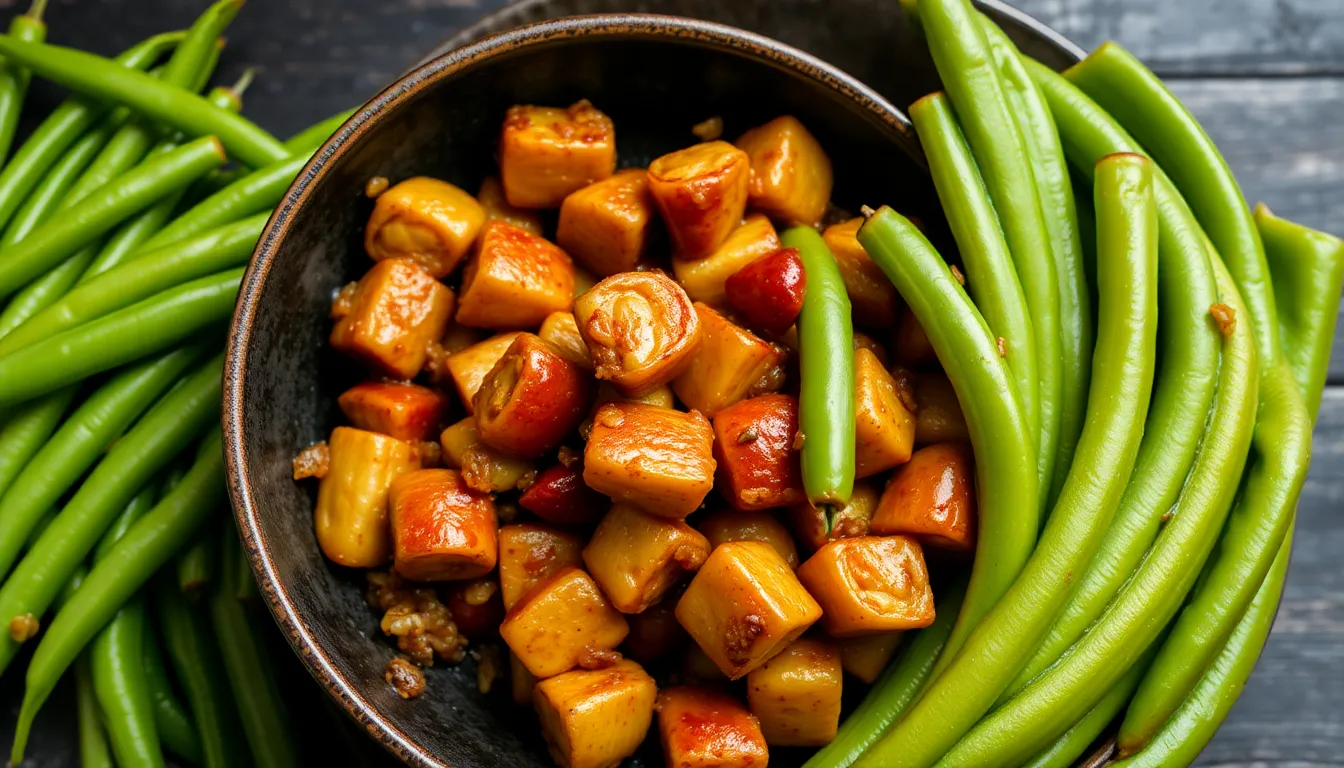Stir-Fry for the Seasoned Cook: Advanced Techniques
Stir-frying is a culinary technique that has captivated home cooks and professional chefs alike for centuries. Originating from Asia, this method combines high heat with quick cooking, allowing for vibrant flavors and textures to shine through. As you embark on your journey to master stir-frying, it’s essential to understand that the key to an exceptional stir-fry lies in advanced techniques. This article aims to elevate your stir-fry skills, transforming your dishes into culinary masterpieces that tantalize the palate.
Section 1: Understanding the Basics of Stir-Frying
1.1 Key Components of Stir-Fry
Before diving into advanced techniques, it’s crucial to grasp the foundational elements of stir-fry:
- Ingredients:
- Proteins: Chicken, beef, shrimp, tofu, or any protein of your choice.
- Vegetables: Bell peppers, broccoli, snap peas, carrots—use a variety of colors and textures.
- Sauces: Soy sauce, oyster sauce, hoisin sauce, or homemade blends.
- Equipment:
- Wok: Traditional vessel for stir-frying, designed to distribute heat evenly.
- Skillet: A good alternative if a wok isn’t available, but may require adjustments in cooking time.
1.2 The Science Behind Stir-Frying
Understanding the science behind stir-frying can greatly enhance your technique:
- High Heat and Quick Cooking: Stir-frying involves cooking at high temperatures, allowing ingredients to cook rapidly while retaining their natural flavors and nutrients.
- Maillard Reaction: This chemical reaction occurs when proteins and sugars are exposed to high heat, resulting in the browning of food and the development of complex flavors.
Section 2: Advanced Techniques for Perfect Stir-Fry
2.1 Ingredient Preparation
The preparation of ingredients is vital for a successful stir-fry:
- Uniform Cutting Sizes: Ensure that all ingredients are cut into similar sizes for even cooking. For example:
- Protein: Cut into bite-sized pieces.
- Vegetables: Slice vegetables thinly for quick cooking.
- Marinating Proteins: Enhance flavors with techniques such as:
- Velveting: A method where proteins are coated in a mixture of cornstarch, egg whites, and rice wine before cooking, resulting in a tender texture.
- Dry-Brining: Salt the proteins in advance to enhance moisture retention and flavor.
2.2 Mastering the Heat
Controlling heat is essential for achieving the perfect stir-fry:
- Understanding Stovetop Heat Levels: Familiarize yourself with your stovetop settings to determine the best heat levels for different stages of cooking.
- Techniques for Controlling Heat:
- Preheat your wok or skillet until it’s smoking hot before adding oil.
- Adjust heat levels during the cooking process to prevent burning or stewing.
2.3 Layering Flavors
Building complex flavors is a hallmark of great stir-frying:
- Aromatics: Build your dish’s base with ingredients such as:
- Ginger
- Garlic
- Scallions
- Using Sauces Wisely: Timing and combination are key:
- Add sauces at different stages for depth.
- Consider adding a splash of liquid at the end to create a glossy finish.
2.4 Textural Contrast
Incorporating various textures makes your stir-fry delightful:
- Crunchy Elements: Introduce nuts, crispy vegetables, or fried shallots for added crunch.
- Achieving Perfect Texture:
- Cook proteins until just done, ensuring they remain juicy.
- Stir-fry vegetables until tender-crisp, retaining their vibrant colors.
Section 3: Flavor Profiles and Ingredient Pairings
3.1 Regional Stir-Fry Styles
Diverse regions offer unique stir-fry styles that can inspire new creations:
- Chinese Stir-Fry: Features soy sauce, garlic, and ginger, with a focus on fresh ingredients. Signature dish: Beef and Broccoli.
- Thai Stir-Fry: Incorporates ingredients like basil and fish sauce for a fragrant flavor. Signature dish: Pad Krapow Moo (Thai Basil Stir-Fried Pork).
- Vietnamese Stir-Fry: Often includes fresh herbs and a balance of sweet and sour. Signature dish: Pho Stir-Fry.
3.2 Advanced Sauce Creation
Creating a balanced sauce can transform your stir-fry:
- Balancing Flavors: Aim for a harmonious blend of sweet, salty, sour, and umami elements in your sauce.
- Complex Sauce Building: Begin with a base, then layer additional flavors through ingredients like:
- Chili paste for heat
- Rice vinegar for tang
- Brown sugar for sweetness
| Sauce | Main Ingredients | Flavor Profile | Best Used With |
|---|---|---|---|
| Oyster Sauce | Oyster extract, soy sauce, sugar | Umami-rich, slightly sweet | Beef, broccoli, and mushrooms |
| Hoisin Sauce | Fermented soybean paste, sugar, vinegar | Sweet, tangy, and savory | Pork, chicken, and stir-fried noodles |
| Black Bean Sauce | Fermented black beans, garlic, ginger | Salty, earthy, and bold | Beef, chicken, and vegetables |
| Szechuan Sauce | Chili paste, garlic, Sichuan peppercorns | Spicy, numbing, and savory | Pork, tofu, and mixed vegetables |
| Teriyaki Sauce | Soy sauce, sugar, mirin | Sweet, savory, and slightly tangy | Chicken, salmon, and grilled vegetables |
In conclusion, mastering advanced stir-fry techniques can dramatically enhance your culinary repertoire. By understanding the components, honing your skills in heat control, and experimenting with flavors and textures, you will create dishes that not only look incredible but also burst with flavor. As you continue to explore the art of stir-frying, remember that practice makes perfect. So gather your ingredients, fire up your wok, and enjoy the delicious rewards of your culinary adventures!




